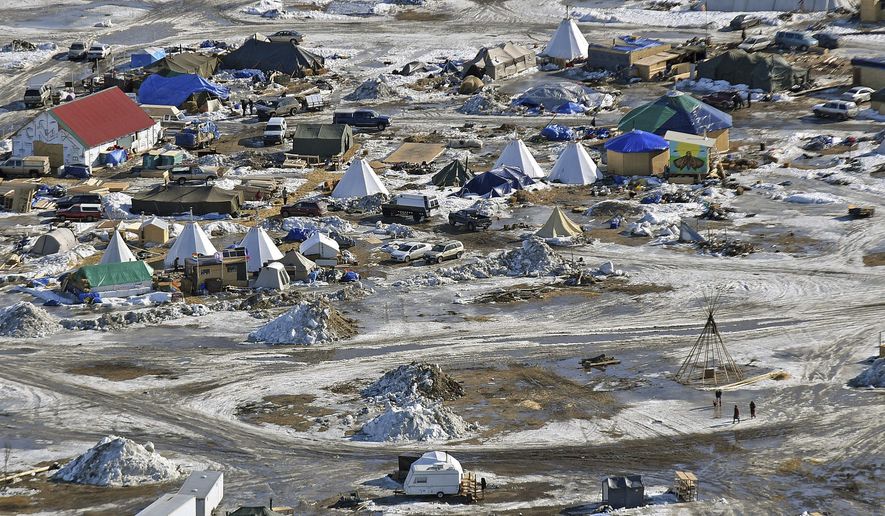There’s an imminent environmental threat to water quality in southern North Dakota from oil leaks, but not from the Dakota Access pipeline.
Protesters left behind about 200 cars and trucks in a floodplain, sending cleanup crews scrambling to tow the vehicles before the spring melt can carry them into the Cannonball and Missouri rivers, along with potentially thousands of gallons of oil, gasoline and diesel.
“There are roughly 200 vehicles down there at last count, ranging from cars and pickups to rental trucks,” George Kuntz, vice president of the North Dakota Towing Association, told Western Wire. “We’re going to have a very drastic situation trying to keep these vehicles from getting into the river — what everybody’s been trying to protect from Day One.”
The vehicle estimate is more than double the original count by local officials, who have aided the Standing Rock Sioux in hauling off tons of garbage scattered across U.S. Army Corps of Engineers land at the former Oceti Sakowin camp, the largest of the pipeline protest encampments.
“We can’t leave them (the vehicles) there. We don’t know what kind of biohazard is going to be produced with all the fluids or any other garbage that’s inside the vehicle,” Mr. Kuntz said.
The irony of the anti-pipeline movement’s “water protectors” leaving behind a fossil fuel mess isn’t lost on local officials like Rob Keller, spokesman for the Morton County Sheriff’s Department.
SEE ALSO: Doug Burgum, North Dakota governor, orders emergency evacuation of pipeline protest camp
“You talk about wanting to protect the water, and yet not a lot of people are staying around to clean up what they started,” Mr. Keller told Western Wire.
The corps has given protesters until Feb. 22 to vacate the campsite, but they may not need any prodding. Parts of the camp are already under several inches of water as this year’s heavy snowfall begins to melt in the floodplain.
Bo Evans, a reporter for KFYR-TV in Bismarck, took video footage Monday of his boots sinking into the water and mud as he walked through the seemingly abandoned campsite past empty, flooded tents and teepees.
“The ice and snow has started to melt, and it is very deep. That is my whole entire shoe under the water,” he said in the video. “I think it’s even deeper in some places. Obviously this is causing some issues for the cleanup effort. Everything is flooded.”
The melt has in some ways helped with the tribe-led cleanup effort, which began in late January and is about halfway completed.
“It’s easier to get some of the structures up because they were iced down, and they’re starting to come up a little easier,” Standing Rock cleanup coordinator Hans Youngbird Bradley told KFYR-TV.
SEE ALSO: Dakota Access pipeline executive compares lawless protesters to terrorists
After months of protests and delays, Energy Transfer Partners is working to finish the final 1,100-foot sliver of the pipeline and begin running oil by May 1.
U.S. District Court Judge James A. Boasberg rejected a request Monday by tribes to block temporary construction on the 1,172-mile, four-state pipeline’s last piece under Lake Oahe.
The Standing Rock Sioux tribe has tried to stop the project over concerns about water quality from the pipeline, which runs about a half-mile from the reservation, while the company insists the state-of-the-art engineering is safe.
A 30-year-old natural gas pipeline runs alongside the Dakota Access oil pipeline route. After a two-year review the corps approved the easement for Lake Oahe in July, but then delayed and ultimately pulled the approval under pressure from thousands of protesters camped out at the site.
Shortly after taking office, however, President Trump ordered an expedited review of the Dakota Access and Keystone XL pipelines. The corps then canceled an additional environmental review and reissued the easement last week.
• Valerie Richardson can be reached at vrichardson@washingtontimes.com.




Please read our comment policy before commenting.